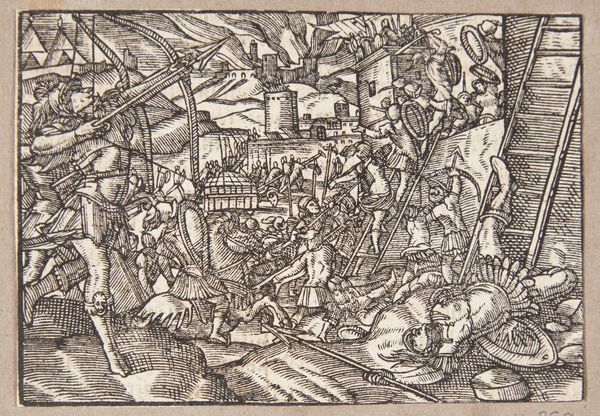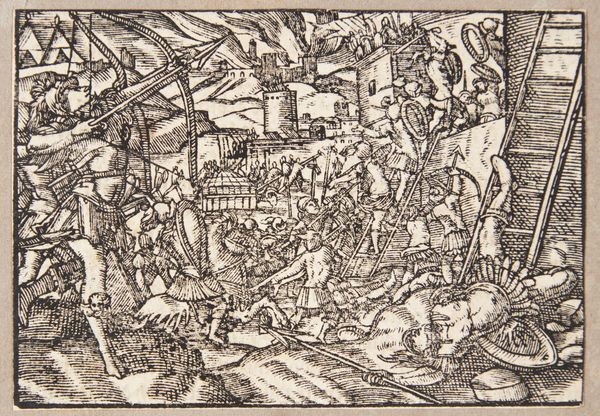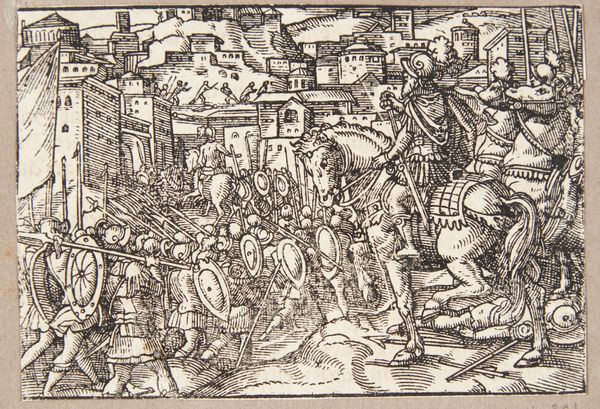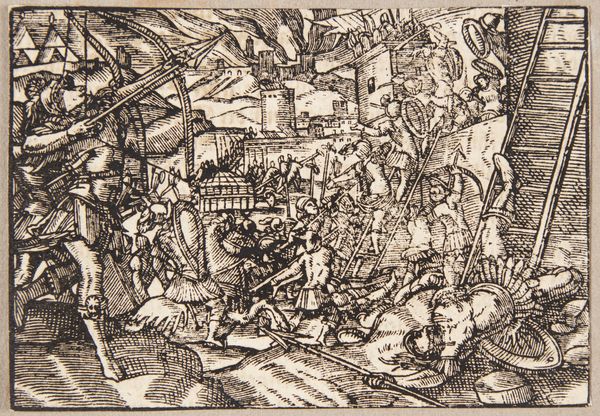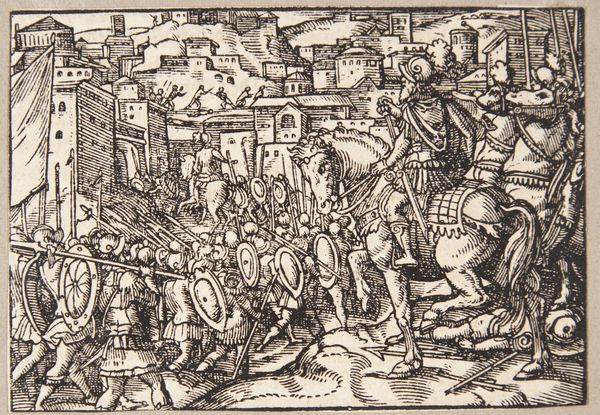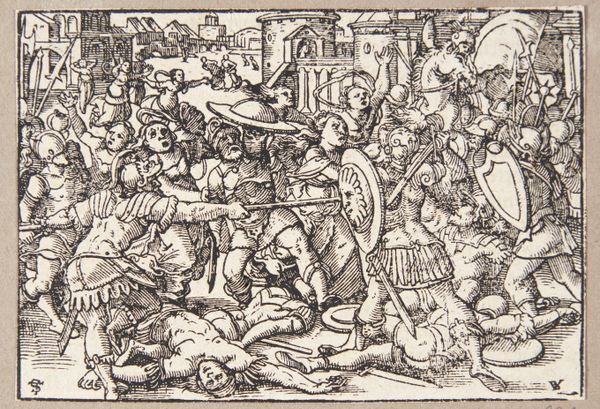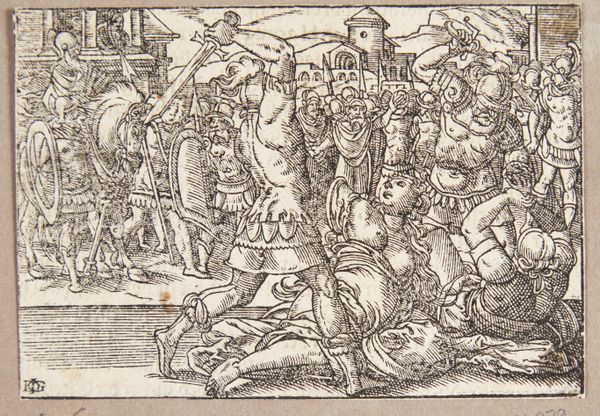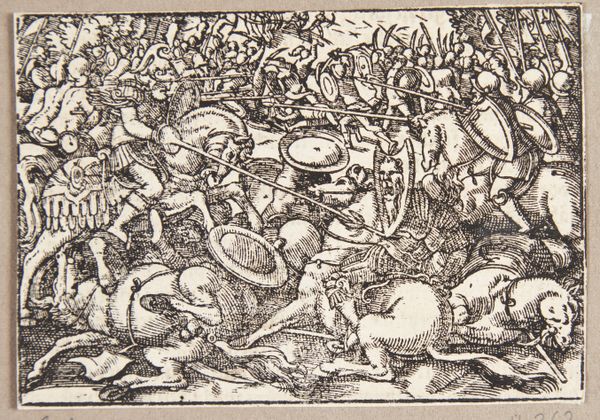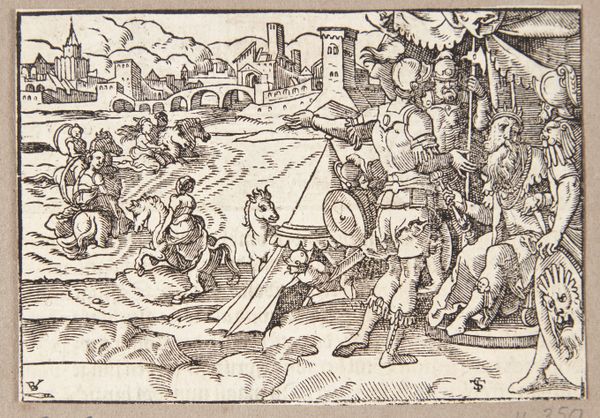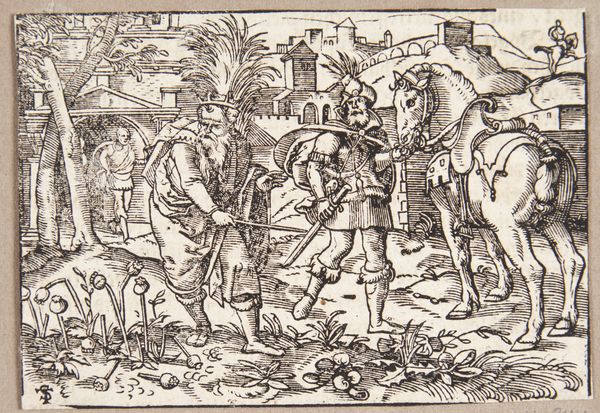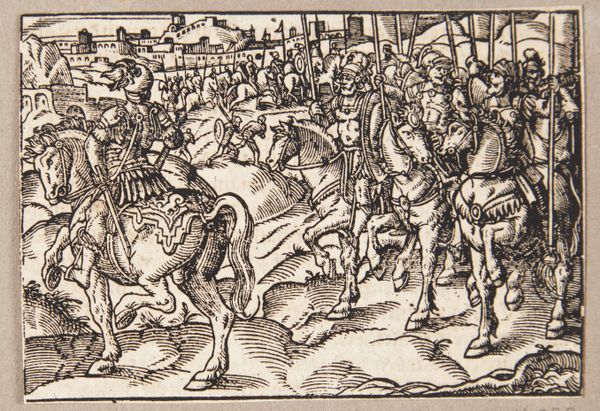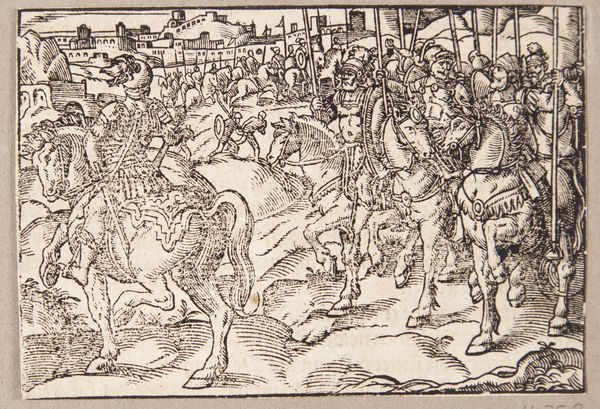
print, woodcut, engraving
# print
#
mannerism
#
woodcut
#
history-painting
#
engraving
Dimensions: 75 mm (height) x 105 mm (width) (bladmaal)
Curator: Looking at this woodcut, I’m struck by the sheer density of lines—almost chaotic in its detail! It definitely evokes a sense of intense battle. Editor: Indeed. What we see here is Tobias Stimmer's "Scipio indtager Veii," made in 1574. It portrays the Roman general Scipio's conquest of the Etruscan city of Veii. A popular theme intended to highlight the historical precedents for leadership. Curator: The way Stimmer uses hatching and cross-hatching creates such dynamic movement. Your eye really bounces around the composition trying to follow the action. It also looks rather busy though, doesn’t it? Like a contest of visual forces, everything straining against itself! Editor: The Mannerist style favored dramatic, complex compositions, mirroring the era’s anxieties regarding religion, political turbulence, and the social order of late Renaissance Europe. Notice the ladders, a powerful element to emphasize the conquering ascent and that there are multiple focal points—no singular heroic figure but many characters playing different roles. Curator: I see how the rising ladders can signify the act of conquering as if they literally symbolize power. Though in its own way, it makes me feel uncomfortable. The repetition and precision speak to that. This historical print probably had a political aim. Who exactly was the audience for this at that moment? Editor: Undoubtedly, this print and similar historical illustrations were distributed in print form across Europe, where the patrons might have displayed them on their walls or pasted inside books. Thus, it not only communicated this narrative of the Roman army but it also contributed to the cultural phenomenon of understanding politics, leadership, and war. Curator: It also makes me wonder about Stimmer himself. Was he promoting any agenda or political view that may have altered this woodcut? He did make other religious and political works too. Editor: Precisely! An interesting thought! By interpreting the composition we also get insight into this moment of print dissemination, which at the time really gave people an appetite for this knowledge! Curator: Seeing this through our discussion, I'm left considering how the aesthetic style serves a bigger discourse about political history during Stimmer’s lifetime! Editor: Indeed! The intersection of style and purpose always makes for the richest readings.
Comments
No comments
Be the first to comment and join the conversation on the ultimate creative platform.
